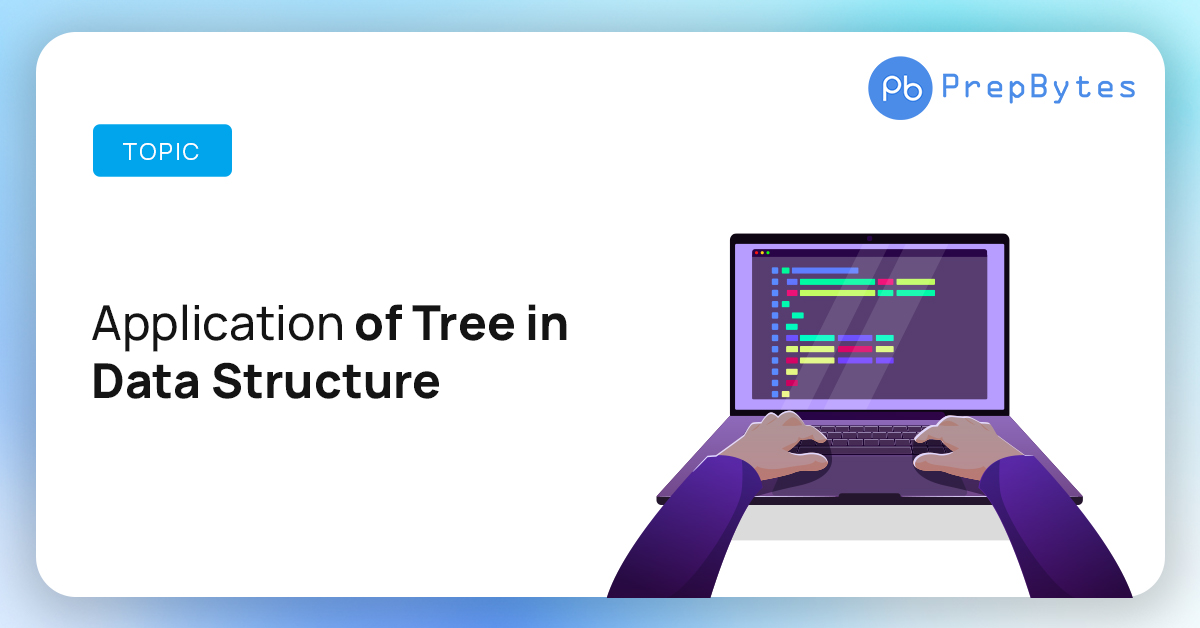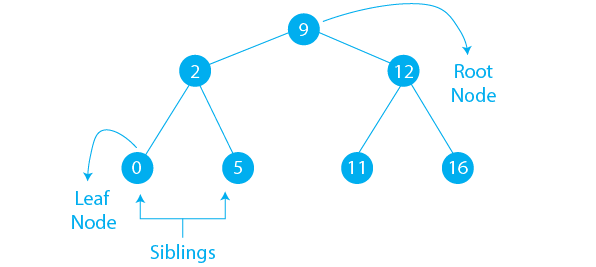Last Updated on August 17, 2023 by Mayank Dham

In this article, we delve into the diverse applications of trees in data structures. We explore how trees are employed to model relationships, implement data storage systems, optimize searching algorithms, and more. By understanding these real-world applications, readers can grasp the significance of trees in organizing and managing data efficiently, thereby improving the performance of various software systems and algorithms. In this article, we are going to study the application of tree in data structure.In further sections of the article, it will be apparent to us how the data structure comes in handy for a wide range of applications of tree in data structure. Before moving to “what are the applications of trees” let’s discuss what is tree in data structures.
What is Tree in Data Structure

A tree is a hierarchical data structure that is non-linear such that there are multiple paths that can be travelled, unlike a single path that exists in arrays or linked lists.
It consists of objects consisting of data and the address of the interconnected nodes. The number of addresses depends on the nodes as it can be from 0 upto n where binary tree has at max 2 address while a generic tree can have more than 2 addresses stored.
Terminologies required for Tree Data Structure
Root Node
The initial node at the top of tree goes by the name root node. It must not be confused with parent node as the ancestor of any node in general can be called as parent node. There is only one root node in a tree.
Parent Node
A node’s immediate predecessor in known as parent node.
Child Node
A node immediate succesor is known as child node.
Sibling Nodes
The nodes that have the same parent or ancestor (immediate predecessor) are known as sibling nodes.
Leaf Node
A node that does not have any children is known as leaf node.
Edge
Any two nodes are connected to each other with the help of an edge. It is also known as link.
Path
A sequence from a nodes connected through edges is known as path.
Depth of Node
The length of path from the root to the respective node is the Depth of Node.
Height of Node
The of path from the respective node to the deepest node is Height of the Node
Applications of Tree Data Structures
File System
Tree is prevalent used in file system of computer where thre and multiple files and folder to locate a data and access it. The folder structure can be broken down to understand in the form of an hierarchical tree data structure
Searching for Key
Speacial type of tree known as Binary Search Tree or BST can be used to find key comparatively faster than other data structures like Array or Linked List.
Finding Minimum Cost
Spanning trees are used to find the path in a tree with minimum cost such that all the nodes are covered.
Storage of elements
Unlike arrays, trees do not have an upper bound for the number of elements like linked list as it stores the address to nodes are stored in heap that are allocated dynamically.
XML/HTML Data
Data used in the website that is composed in the hierarchical form is a general application of tree in data structure that has a usage in website architecture.
Priority Queue
Priority queue data structure is implemented with the help of heap, a specialized form of tree used to extract the highest priority element that is found at the root of the tree.
Indexing in Databases
B Tree and B+ Tree, an advanced form of tree, are used to implement indexing in databases.
Usage in Compiler Design
Syntax Trees are used during designing a compiler to make operations like evaluation of arithmetic expression, scanning, parsing and generation of code.
Plotting points
To plot points in K dimensional space, K-D Tree shortened for K Dimensions, a space partitioning tree is used.
Decision-Making and Analysis
Decision Trees are used in machine learning for decision analysis and studying the data.
Web Search Engines
Trie is used for search patterns where a node is a letter and its children are indexed as the next letter in the sequence. Compressed form of trie known as suffix trie is used for web search engines. It can also be used to perform a full-text search.
Conclusion
In conclusion, the applications of trees in data structures are far-reaching and impact multiple facets of computer science and beyond. Trees provide elegant solutions to intricate problems, offering efficient data organization, optimized searching, and hierarchical representation. From databases and file systems to artificial intelligence algorithms and network routing, trees play a vital role in enhancing performance and enabling effective data management. We hope you liked this article on Application of Tree in Data Structure and hope to see you again with another piece of insightful article from PrepBytes.
FAQs related to Tree
1. Are trees relevant outside of computer science?
Yes, trees have applications beyond computer science. They are used in biology to represent evolutionary relationships, in linguistics for language syntax analysis, and in mathematics for solving problems involving hierarchies and recursive structures.
2. What are the common applications of trees in data structures?
Trees find applications in various fields, including file systems, databases, network routing, artificial intelligence, syntax parsing, and more. They are used to organize and optimize data storage and retrieval, implement efficient searching algorithms, and represent relationships between entities.
3. How do trees optimize searching algorithms?
Trees such as binary search trees and balanced trees provide efficient searching by narrowing down search paths based on comparisons. These trees reduce the search space and enable faster retrieval of data.
4. Can trees be used in file systems and databases?
Yes, trees are commonly used in file systems and databases to organize data hierarchically. B-trees and B+-trees are examples of tree structures used for indexing and efficient data retrieval in large-scale storage systems.
5. What is the importance of tree traversal algorithms?
Tree traversal algorithms, such as in-order, pre-order, and post-order traversals, are essential for processing tree nodes in a specific order. They are used in various applications, including expression evaluation, syntax parsing, and data manipulation.
6. How do trees contribute to network routing?
In computer networks, trees are used to implement routing algorithms that optimize data packet forwarding. Hierarchical tree structures ensure efficient data transmission and minimize network congestion.


